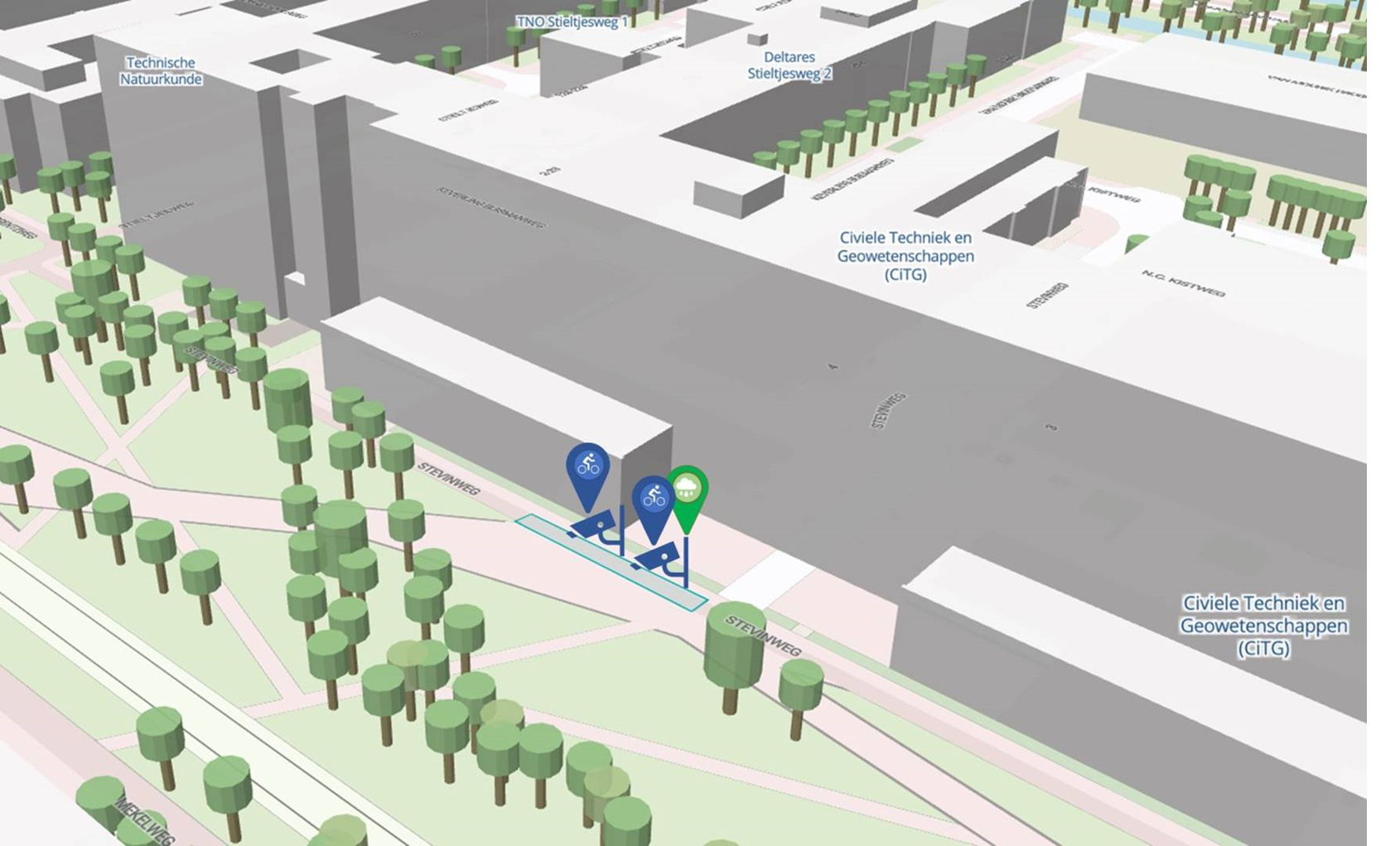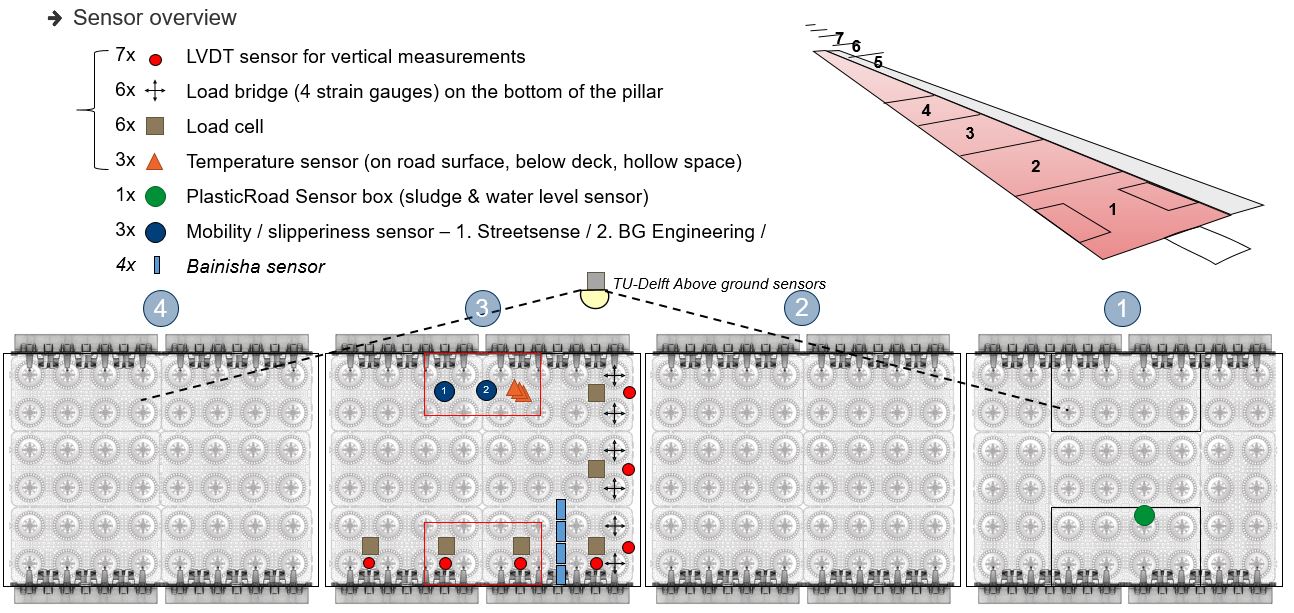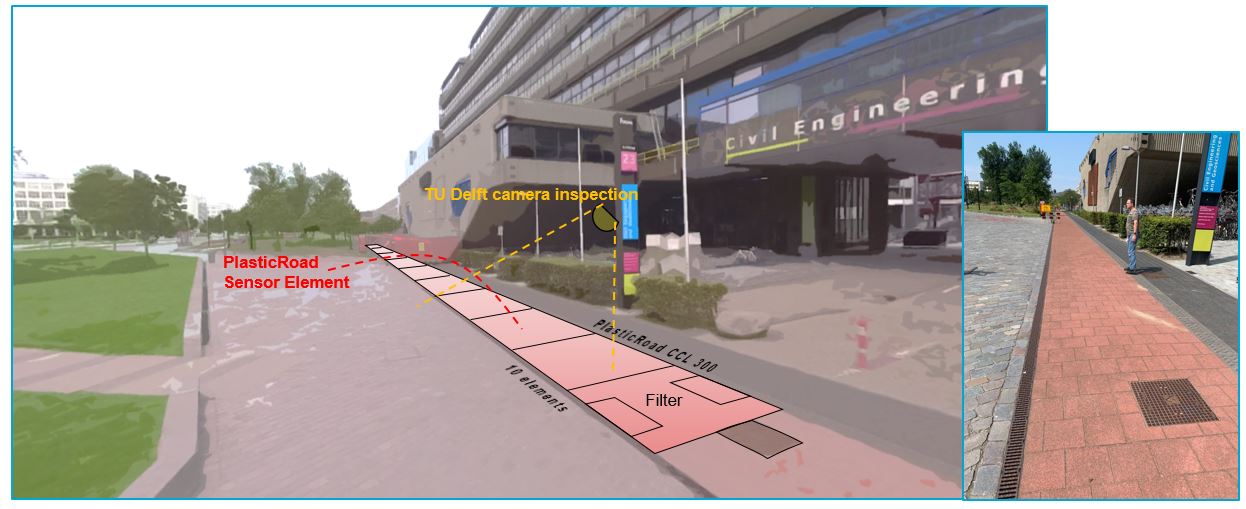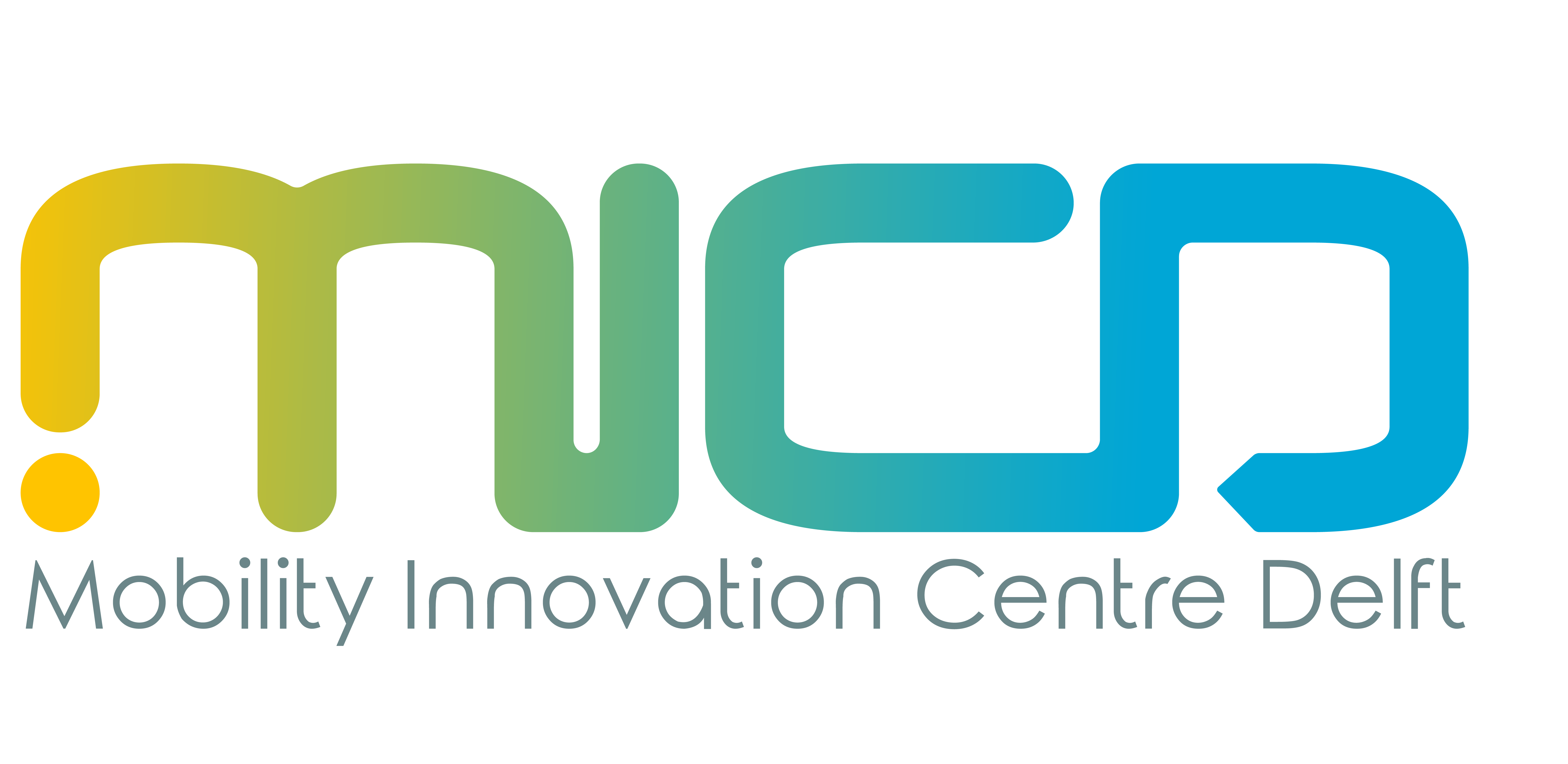Publication date: 30 November 2021
This privacy statement relates to the collection and processing of data for the scientific research project: Plastic Road as a Smart Road.
Intelligent bicycle path
An intelligent 25-metre stretch of cycle path monitors cyclists: when they ride on the cycle path, in which direction, and at what speed. The project provides information about the behaviour of road users, which will be used to organise the accessibility of cities of the future in a smarter and more efficient way. Various sensors underneath and in the road surface provide insight into how the bicycle path is used and what effects that has on the road. A list of the types of sensors and what data they measure can be found further on this page.
Outdoor Mobility Digital Twin
The data collected by the sensors in the bike path, together with other data sources, will be disclosed in a so-called Outdoor Mobility Digital Twin, a digital copy in 3D of the TU Delft Campus. The system provides anonymized information about public transport, cars, cyclists and pedestrians, such as the amount, speed and direction per minute. Using Artificial Intelligence, not only accurate short-term predictions of transport flows on the TU Delft Campus are possible, but also longer-term forecasts.
Privacy guaranteed
The sensors do not collect any personal data. They record how many cyclists move along the bicycle path, in which direction and at what speed, but not who the cyclists are. All information that could relate to an identifiable person is encrypted in such a way that it cannot be traced back to an individual.
How do these sensors work and where are they located?

Picture above: the sensors already installed above ground (stereo vision sensors and the weather station) near the intelligent cycle path.

Picture above: the sensors installed in and under the road surface at the intelligent cycle track

Picture above: the cycle path is made up of 10 elements; element 1 contains the water/dirt filter and element 3 the sensors.
Sensors with stereo vision
These digital sensors are a combination of a camera with stereo vision and computer vision software. The video images from the camera are analysed directly and at the source by means of this software and immediately deleted afterwards. Only the results of the analyses are sent to the OMD mainframe. Every minute the mainframe receives a message, which, in addition to the ID of the sensor and a time code, contains the inflow, outflow and number of objects visible in the field of view, as well as the route of the moving objects in the field of view. It is not possible to track individual objects since the fields of view of the stereo vision cameras do not overlap.
Sensors in the bycicle path surface
The data from these sensors does not contain any information about individuals and is therefore not privacy-sensitive. For the sake of completeness, however, these sensors have been added to the overview. The road surface contains a combination of sensors that measure how the road is being used and whether maintenance is needed, for instance. The sensors measure the temperature both at the road surface and at a depth of 10 cm, the load (in N), the water and dirt level on the road (in mm), and the movement of the road surface (in mm). In addition, they measure the traffic intensity in both absolute and relative terms. The electrical conductivity at the road surface is also measured both as an absolute value and translated into road surface conditions: dry/damp/wet, and sprinkled/unsprinkled. These data are stored on the Microsoft Azure servers in the Europe West region, with the server located in Amsterdam.
Mmwave sensors
These sensors can be used to count cyclists, pedestrians and cars and work like the radars used to track aircraft: a wireless signal is sent and its reflection is captured and displayed as dots on a screen. The advantage of these sensors is that their very high frequency (with wavelengths in the mm range) provides enough information to tell the difference between a people, animals, bicycle, cars, etc., but it is not fine-grained enough to capture personally identifiable information.
GPS/GNSS sensors (to be used in Q2 2022)
These sensors are used to determine the movements of cyclists and pedestrians with centimetre precision. The Global Navigation Satellite System (GNSS) is used for accurate positioning. For many applications, however, it is not only important that the positioning is accurate, but also that it is reliable under all circumstances. Deviations and errors in the GNSS signal occur occasionally. Software has been developed at TU Delft that can guarantee the desired high reliability. The GPS/GNSS sensors including software will be used as validation for the other sensors used to detect cyclists and pedestrians. Participants (10 at a time) who take part in the validation study (max. one hour) are given a GPS/GNSS sensor and walk/cycle along the cycle path with it. At the end of the study, the participants hand in the sensor. Only the coordinates in time and space of the movements of the cyclists/pedestrians over the bicycle path are recorded and sent to a secure server.
Weather station
The weather station measures weather metrics such as temperature, humidity, rain rate, UV intensity, wind speed and direction. Measurements can be taken as often as every minute. The data from these sensors do not contain any information about individuals and is therefore not privacy-sensitive. For the sake of completeness, however, these sensors have been added to the overview. These sensors are visible on one of the two flagpoles next to the bicycle path.
Why and how long is what data kept in the project?
All personal data collected and processed as part of this project will be anonymized or deleted at the time they are no longer needed for scientific research.
Updating privacy statement
This privacy statement will be updated in case of any relevant changes to the project. The date at the top of the page is the date this statement was last reviewed and updated.
More information
If you have any questions, please contact Sascha Hoogendoorn-Lanser (director of the Mobility Innovation Centre Delft) at s.hoogendoorn-lanser@tudelft.nl.
For privacy questions, you can also contact our Data Protection Officer, Erik van Leeuwen, at privacy-tud@tudelft.nl.
More information about other sensors on campus and related privacy aspects are described in the Privacy Statement on the TU Delft website.
